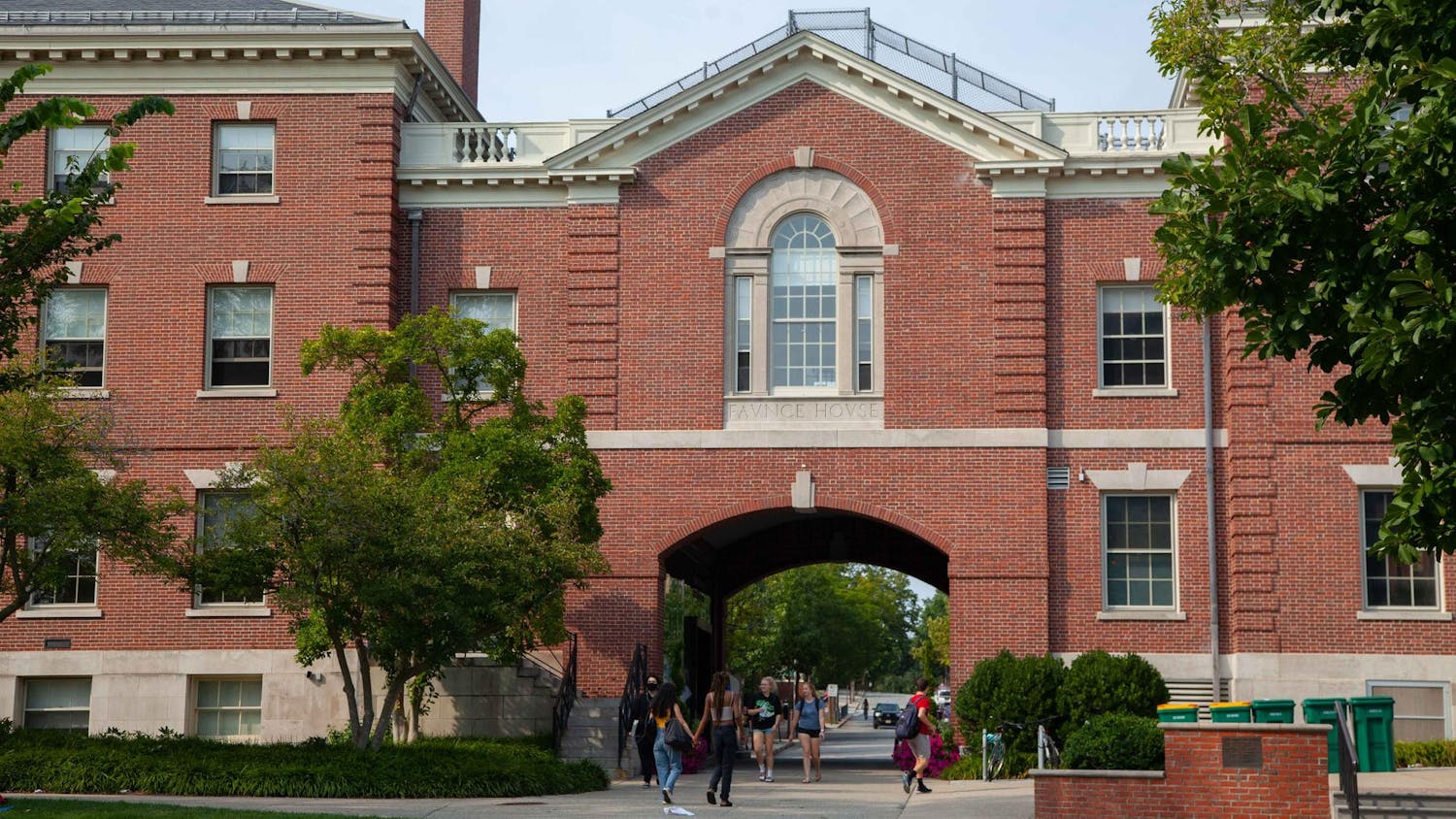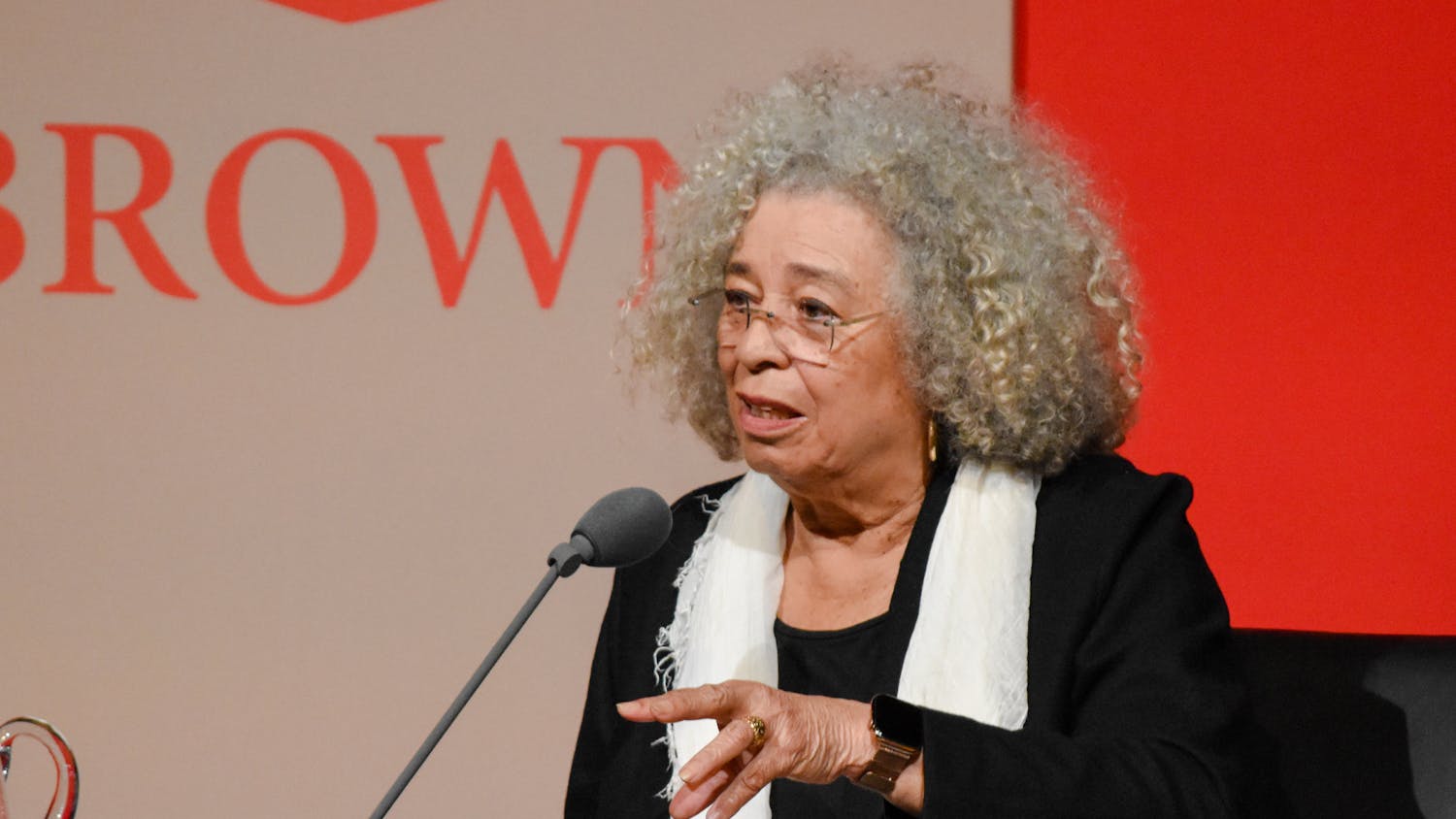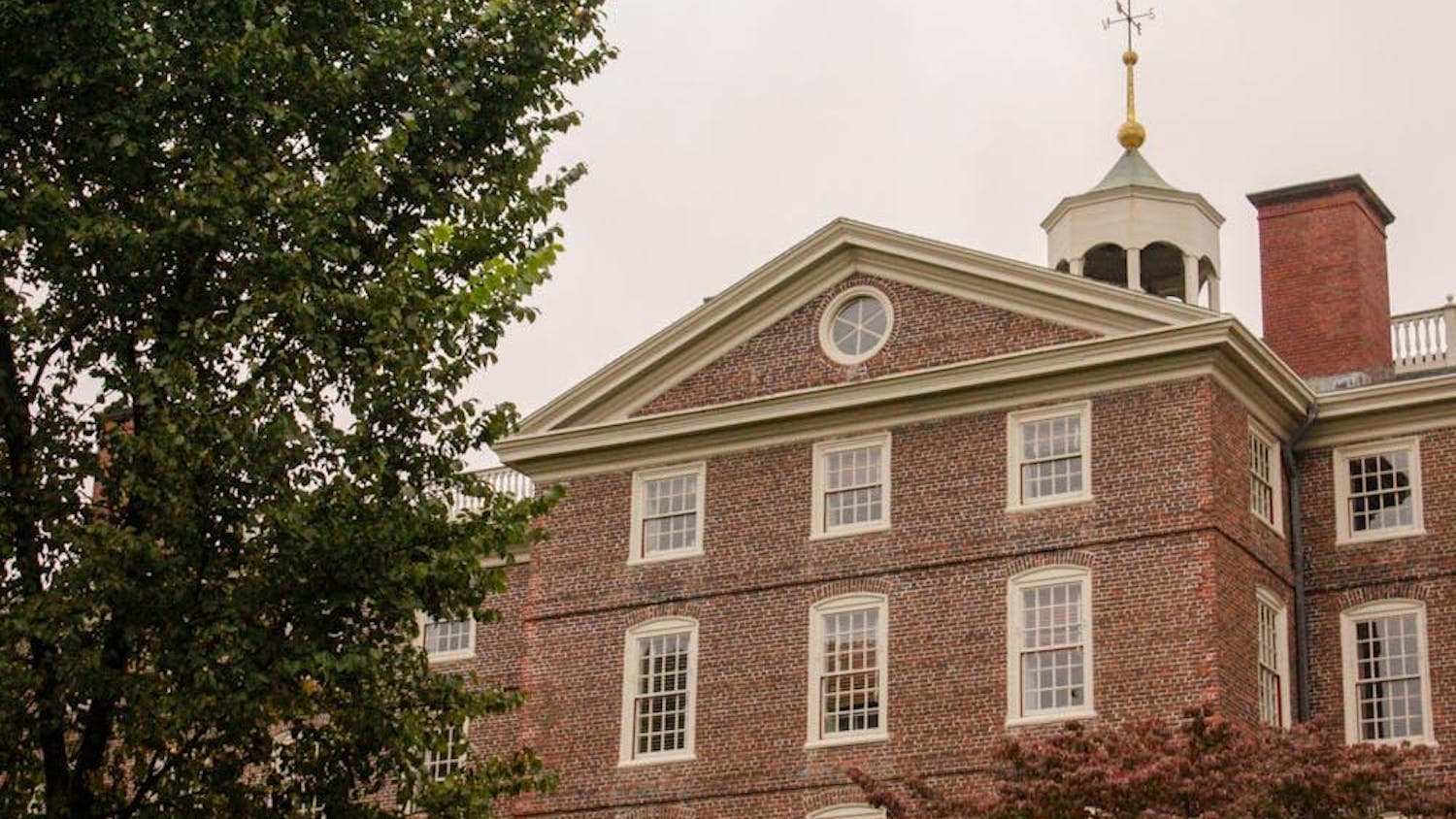When former president Ruth Simmons arrived at Brown in 2001, she was ready to effect major change. "I fear we have gotten caught up in enhancements of all kinds while fundamentals are wanting," she told faculty in the first week of the school year.
Eleven years later, in the wake of Simmons' reforms, Paxson told The Herald the opposite: She doesn't see a need to alter the University dramatically. "My job right now is not to really define the fundamental direction of the University," she said. "My job is to figure out how we can fulfill that goal of being a great research university with a superb undergraduate education."
Simmons' exit and Paxson's entry mark the fourth University presidential transition, including the interim presidency between former President Gordon Gee and Simmons, in less than 20 years. Examining the successes and failures of past transitions sheds light on this latest chapter in University leadership.
Both Paxson's priorities and her timeline for achieving them will be shaped by the University climate she has inherited. Brown's position is widely seen as more stable than it was in 2001 when Gee's turbulent and truncated tenure cast an uncertain cloud over College Hill. Paxson's administration will face different campus needs and new Corporation pressures in a changed national atmosphere.
Two overarching issues will guide the University through the planning process for the next several years, Paxson said. Brown first needs to reinvest in the resources necessary to accompany the large faculty growth that accompanied the Plan for Academic Enrichment, which Simmons spearheaded. And second, Paxson said, Brown has to "make very specific choices about where we build excellence."
A transient transition
Presidential transitions often serve as a chance for University leaders to reflect and reevaluate the institution's trajectory - but the circumstances of the transition influence how sweeping the new president's agenda might be.
"Transitions are not easy for anyone, because you don't know what's going to happen," said Sheila Blumstein, a professor of cognitive, linguistic and psychological sciences who served as interim president between Gee's resignation and Simmons' selection. "All of us like stability."
Inheriting a financially sound university can be a double-edged sword for a new president. A quantitatively "healthy" institution removes the pressures of immediately devising a recovery plan but creates a more ambiguous jumping-off point from which to devise a new agenda. For Paxson, entering in the wake of Simmons' departure echoes back to the University's standing at the time of former President Vartan Gregorian's resignation in 1997.
Gregorian left the University in the most successful position it had attained up to that point in terms of its finances and standing relative to its peers.
"The University's financial resources ... while modest by some standards, are the strongest the University has ever had," Gregorian wrote in his farewell letter to the Brown community. Gregorian's Campaign for the Rising Generation, a four-year initiative launched in 1992, raised $534 million in donations and catapulted the University's endowment to $874 million at the time of his resignation. By the spring of 1997, the annual tuition increase was at its lowest in 35 years at 4.6 percent, and financial aid was one of the most rapidly growing items on the University's budget, receiving $25.6 million that year.
With the University in a strong financial position, Gee rolled out an ambitious agenda for the University, envisioning Brown as an economic powerhouse with large science programs funded in part by bond sales. Many viewed these goals as incompatible with Brown's institutional identity and worried Gee would cut support for the arts and humanities and implement major changes without consulting the faculty.
Gee entered his position at Brown with a combined 17 years of experience as president at three public universities - all with undergraduate populations between five to seven times the size of Brown's. At these institutions, Gee "basically did external relations and left daily operations to administrators," said then-Provost Kathryn Spoehr '69 after Gee's resignation.
"The absolute truth is that I have struggled from the day I came to Brown (with) whether or not Brown and Gordon Gee were the right fit," Gee said in an interview with The Herald the day after his resignation announcement in February 2000.
Gee acknowledged from the onset of his term a sense of dissatisfaction with Brown's public presence. He foreshadowed this future impasse between his executive, managerial-style vision for Brown and the University's scholarly tradition in the first letter addressed to the Brown community after he took office. "It is my sincere hope," he wrote, "that in the coming years Brown will not be seen as a distant place isolated on a hill, surrounded by an academic Berlin Wall."
Paxson brings a decidedly different perspective to the University. She spent most of her career as a professor and has worked at institutions much closer to Brown's size and academic mission.
"Her mode of engagement is on a very scholarly level," said Provost Mark Schlissel P'15.
The value of vision
"Vision is very important" in selecting a president, said Chancellor Emeritus Stephen Robert '62 P'91, who chaired the search committee that selected Simmons. "The description of who we're looking for is God on a good day. ... There are not many people in the world who can bring that to the table."
Gee's resignation only two years after he assumed the presidency left the University stranded with incomplete projects and an unclear direction. The resultant directional and financial chaos posed daunting challenges for Simmons upon her arrival - but also provided the opportunity for her to set a clear agenda and make a name for herself.
"I kind of hit the wall," Blumstein said of the difficulties she faced as interim president before Simmons took over in 2001.
Though Blumstein was well-liked on campus, her interim tag made it hard to develop a sense of major progress, said Jim Egan, professor of English. "Everybody felt like we were kind of in a holding pattern" before Simmons was chosen, he said.
Blumstein said that any concrete projects requiring new funding, like the introduction of need-blind admissions, were in flux until Simmons' arrival. "We continued discussions and a certain level of awareness," Blumstein said of ensuring that these potential changes would remain at the forefront after the new president took over.
Simmons' selection energized students, faculty and staff. "People were really excited," Egan said. "There was a tremendous sense of optimism for the future."
Some credit Simmons with revitalizing a campus in need of direction after a turbulent few years. "She came into a community that in some respects had lost its ability to aspire and was able to instill a sense that Brown could really aspire and reach in deep ways for goals that seemed unattainable," said Chancellor Thomas Tisch '76, who described Simmons' tenure as "nothing short of monumental in the life of the University."
Once in office, Simmons moved quickly to advance an ambitious agenda, setting the Plan for Academic Enrichment as a cornerstone. The strategic plan outlined a number of objectives to boost Brown's reputation, research profile and level of instruction. Among the most significant achievements were a 100-member faculty expansion, heavy fundraising, a stronger focus on internationalization and the implementation of need-blind admissions for domestic first-years - a policy already in effect at every other university in the Ivy League at the time. Her tenure was marked by renewed emphasis on research, the sciences and graduate education, as well as arts and humanities initiatives like the construction of the Perry and Marty Granoff Center for the Creative Arts.
Tisch noted Simmons' ability to achieve most of her curricular and administrative goals with balanced budgets during a major economic downturn.
Most of the goals she initially articulated came to fruition, Egan said. "She had a very clear vision, and that vision was to transform Brown's research profile in the hopes of transforming Brown's ... reputation in the United States and (in) the world at large," he said.
But Simmons said she made several major changes before acquiring a full understanding of the University or her own vision for it.
"All the things that people talk about now, I did with no knowledge of Brown," Simmons told The Herald last year about some of her first initiatives, particularly need-blind admissions and faculty expansion, adding that her lack of experience allowed her to overlook the potential risks of those decisions. "Maybe that's the way to make decisions - in the dark," she said.
A slower strategy
Though Paxson has confronted debates about expanding financial aid and the University's academic mission, the Brown she inherited is stabler than the institution Simmons arrived at in 2001- a change that allows Paxson to build on existing structures instead of devising a dramatic new agenda.
That stability can be credited in part to the clear path Simmons set for the University, Egan said.
"Paxson is entering at a completely different moment than Simmons because Paxson is entering at a moment when Brown has transformed itself," he said.
Administrators characterized Paxson's plans as building on Simmons' accomplishments in a progressive way. During the search process, Tisch said, "Chris was capable of creating a sense of her worthiness to be a steward of all those great treasures at Brown, but, not by any stretch of the imagination, somebody who's going to be just a static steward."
Already, administrators have pointed to notable similarities between the two presidents' visions. Schlissel described Simmons as demonstrating "a remarkable mix of strategic and tactical" ability to grasp both the big picture and its various smaller pieces, while Tisch lauded Paxson's "combined intellectual breadth with a managerial sense that connects the granular to the strategic."
Yet Paxson and her predecessor diverge in stylistic ways, perhaps in part because of the different burdens they inherited.
While Simmons had to confront major obstacles - including the Sept. 11 attacks in the first month of the school year and a national anthrax scare weeks later - the beginning of Paxson's tenure has not been marked by such crises. In her initial months, Paxson has had the chance to sit down with faculty members, administrators, staff, students and local leaders. Paxson met department heads in their offices, said Dean of the Faculty Kevin McLaughlin P'12, which showed "that she was going to be accessible and connected directly."
"So that's a slight change of emphasis, I would say, from Ruth Simmons," McLaughlin added.
Such an emphasis is natural for an outside, first-time president like Paxson, said higher education expert Michael Bastedo, associate professor at the University of Michigan School of Education. In that situation, "one of the first couple of things you need to do is you need to spend a lot of time walking around the institution and trying to get to know all of the major players. ... What are their values and interests and things that they're trying to accomplish?" he said.
The presidents' timelines for setting agendas have also differed. Simmons was quick to jump into specifics, calling for faculty salary increases at the year's first faculty meeting and speaking out against graduate student unionization that same month. The desire to move quickly permeated University leadership in 2001 - in the fall, long before Simmons' plan was complete, the Corporation began preliminary fundraising because they felt a "sense of urgency," Robert told The Herald at the time.
Paxson has taken a different approach. Though she and Schlissel have zeroed in on a set of broad issues to be examined in the strategic planning process, she has resisted making any public decisions on those top priorities before the committees present their suggestions.
"It's very intentional," she said of the decision not to reach conclusions at this stage. "I clearly have, you know, my own preferences and views about what's important and what's not. But I also think that I don't want to get out ahead of the work that our faculty and students and alumni and Corporation members will be doing over the course of the year."
Despite these initial differences, Paxson's early planning initiatives indicate that she may be following a similar timeline to Simmons' in establishing overarching University plans. Both presidents set the stage for a strategic planning process during their first year in office, and Paxson has expressed interest in launching an expansive capital campaign to finance the University's newly identified needs. Paxson identified internationalization, online education, the global financial environment and considerations of expanding Brown's physical campus as new priorities that are more salient now than they were when the Plan for Academic Enrichment was developed.
The expected timeline for Paxson's strategic framework is consistent with many contemporary private university presidents, said Stephen Nelson, a higher education expert and senior scholar in the Leadership Alliance at Brown. Generally, broad strategies become apparent by the president's second semester at the latest, he said, with university boards pressuring new presidents to commence capital campaigns soon after. By the time those conclude, typically within eight to 10 years, most presidents do not want to deal with another campaign, he said, and may leave soon after.
Such a major financial undertaking consumes much of a president's attention, Bastedo said. "If you're entering a new capital campaign, that is going to take up an enormous amount of the new president's time, easily more than half," he said.
A social campaign
Paxson's effort to engage the faculty and aptitude for gaining familiarity with her community members have made her stand out early on in her presidency, Blumstein said.
"I think she's doing a terrific job," she said. "She listens, reaches out."
Her outreach has so far translated into the formation of six committees each tasked with developing a major strategic initiative. Preliminary reports are expected by the end of the semester, and a new strategic plan is set to be in place by the Corporation meeting in May. Just like Simmons, Paxson will likely fund these new goals with her capital campaign, Schlissel said.
As Paxson moves forward, one major question about her presidency will be what definitive mark she will seek to leave on the University.
Amid the shifting landscape of higher education - including tuition hikes, the advent of online instruction, internationalization of university life and physical expansion - Paxson's decisions could significantly influence the path.
Paxson's challenge, then, is far different from the need for progress and stability that Simmons confronted in 2001, Nelson said.
"It's in some ways more of a challenge for her. It's kind of like, how do you follow a really good act?" he said. If she chooses to build on Simmons' work, he added, the early 21st century could be remembered as "the Simmons-Paxson era."
Nelson said there is also a chance for Paxson to use the University's good standing as an opportunity to undertake a thorough curricular review.
Robert said he hoped the Paxson administration would not forget to elevate academics above all other priorities.
"You have to keep your eye on academic standards," he said. "We can build many buildings and be very international ... but if we don't have terrific academics, first-rate departments and well-funded research, then the core mission of Brown is compromised."
Blumstein said Paxson will need to communicate her personal vision for the University to ensure that her success as an individual president constitutes a success for the Brown community as a whole.
"A good leader brings people with them," she said, adding that for a newcomer taking a position of such high authority, it can be tempting to think "miles ahead" and therefore create an unproductive gap between the various components of University leadership.
But Blumstein was optimistic that Paxson will avoid such a mistake. "That's not her style," she said.
Though Paxson will exert her own style and influence throughout her tenure, she inherits a presidency shaped by a rich University history, an interconnected higher education landscape and the immediate context established by her predecessors. How those factors will determine Brown's trajectory in the years to come remains an underlying question for the Paxson presidency.




